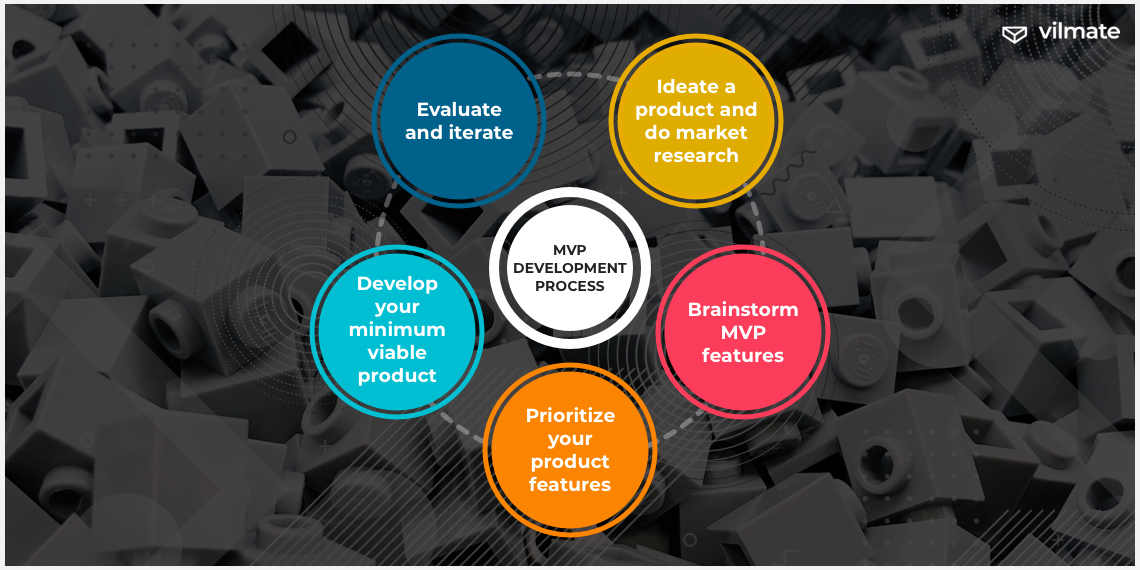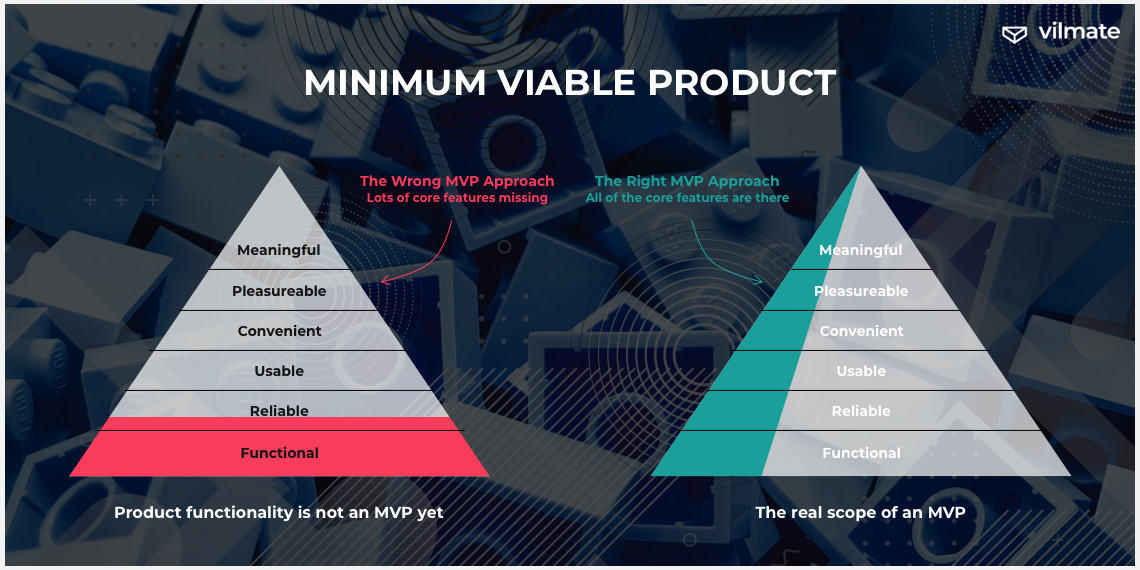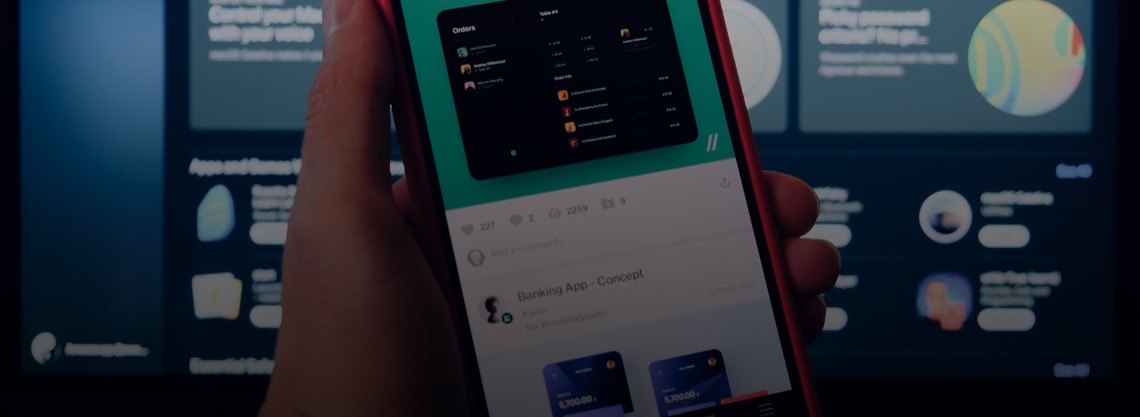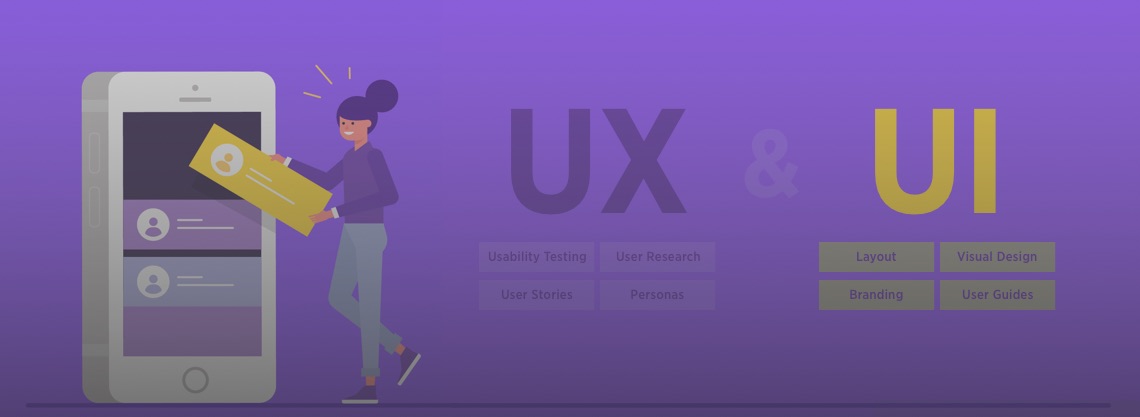The founding team members who have a product idea but lack technical skills run the risk of ending up doing nothing. And mostly out of fear to fail when trying to put out a product on their own. However, the perfect time to launch your product is now. So, we have some excellent news for startups that initially don’t have the resources to get down to building their software solutions right away.
We insist that it is still possible to make a good start without having a technical co-founder as part of your team. It’s not necessary to have a founding team member with advanced technical knowledge and skills. Still, your idea needs to be expertly validated. That’s why, strange as it may sound, the excellent starting point for a software project is the development of an MVP (minimum viable product.)
So, instead of taking random steps or restraining from taking any, you should find a dedicated team that will guide you through the technical intricacies of the project initiation phase and will build an MVP for you. Let’s find out what is an MVP in software development and why you actually need one.
What is a Minimum Viable Product?
A minimum viable product (MVP) is a product that is designed to either support or contradict your primary hypothesis. Why is it important? An MVP is similar to the pilot's flight simulator. While pilots do not have to fly a plane (yet), they are expected to master the skills. These skills must ensure that the aircraft works before it is released into the wild. The development of a minimum viable product thus resembles going through the preflight check-list that is addressed before the pilot’s maiden flight.
Making sure the plane is ready to take off is, therefore, a lot like building and testing an MVP. The difference is that an MVP is the first version of your product that is released with a sufficient set of features to test the product and gather relevant user feedback for the success of further software development.
Originally, the term was introduced and popularized in the book The Lean Startup (2011) by Eric Ries. According to the source, delivering an MVP means the following:
-
Lean development - the Lean Startup approach proposed in the book is used by companies to test their vision. In the first place, lean in this context means working smarter, spending less, and discovering more. Within this approach, the development of MVPs follows a simple pattern: build-measure-learn. Then, a team can evaluate their vision without going into much detail and coming up with a product that no one will use.
-
Validated learning - the information about the customers that is collected by a team as a result of MVP development. The team generates the maximum amount of learning by taking a specific relevant metric and watches how this metric is changing. This allows the team to determine how the customer's experience has been affected, avoid overhead, verify the idea, and use the knowledge received as a foundation for building their fully functional product.
-
The early launch - this is the whole point of building an MVP. Launch early, launch simple, and test thoroughly is the secret formula of the MVP efficiency. In most cases, it is a good idea to scrap the insanely complex plans that nearly every startup has and launch an MVP. Some release planning will help you define the features you’d like to deliver in upcoming releases, and launching early often allows you to learn how people may use your product is the essence.
So, an MVP is an effective way to set foot in the market and generate actionable marketing intelligence.
MVP development process
Building minimum viable products is not the same as building prototypes or mockups of a mobile or web application. In the same fashion, merely having an abstract set of features in mind without checking the viability of a product in the wild is nothing like having a full-value MVP.

Instead, there are some specific steps to be taken by a founding team in cooperation with a development team to build and test their minimum viable product successfully:
1. Ideate a product and do market research.
The number one reason why startups fail, as CB Insights claims, is that there’s no niche at the market to be filled by the product you mean to develop. Coming up with an idea is not enough. Your assumption must be, if not 100% accurate, at least fuelled by the knowledge obtained from conducting prior market research. An assumption that users will love your app just because you personally think your idea is interesting is the greatest cognitive bias you must avoid. To begin with, this idea you are about to verify should match the following criteria:
- Be relevant in a given context for a given audience
- Be straightforward - make your idea easy to comprehend
- Have advantages over competitors - distinguish what features of your product are basic and which ones are differentiating (i.e., may be used to your advantage)
- Be functional - know the channels through which your product can reach your customers
- Solve customers’ problems - be precise, what problems your product can help resolve
- Have metrics for measuring a product’s effectiveness: churn rate, customer acquisition, user engagement, percentage of active users, customer lifetime value (CLV) and others
2. Brainstorm MVP features.
As logical as it sounds, building an MVP basically means creating a product with minimum features, so it will be necessary to determine which set to go for in the first place. Keeping in mind your unique value proposition and relying on the metrics we listed above, you should select those that are relevant for you individually. Then, you need to decide which feature sets are critical to emphasize at the outset for building the first version of your app. As you grow as a company, you'll naturally move in line with your pre-defined feature sets, and you'll also have the chance to make adjustments to suit your business goals.
3. Prioritize your product features.
At the previous stage, you are supposed to define the full pool of features that an MVP may be built upon. It is now the time to determine your priorities and to plan a roadmap that will illustrate the discrepancies between your wants and actual possibilities. Prioritization is also a key to the accurate testing of a new product. To prioritize wisely, you should consider the factors of the required effort and the expected impact. Then, after giving the issue some careful consideration, you’ll be able to break down the features you’ve come up at the second stage into three categories: must-haves, nice-to-haves, and not needed functionality.
4. Develop your minimum viable product.
This is where an MVP version becomes fundamentally different from a Proof of Concept. The difference lies in the circumstances for using them. In most cases, the MVP will be displayed publicly for public review. The intention is to capture feedback from your user base and optimize your product before you start building a whole project that might be available for a third-party review. In turn, a Proof of Concept is never seen by customers. It is needed to do a ground-up analysis of the feature in its fullness and check its validity, while an MVP is required to test the market viability.
So, MVP development begins. We suggest that you go for it together with the same tech team that you expect to continue developing your actual app with. If finding a tech-savvy co-founder for a startup is something that requires a big budget (which is not always that easy for a startup), finding a team of professionals to build your product for you with a view to retaining the talent looks more realistic. Besides, if the team has experience in delivering workable MVPs as we do, the outcomes will be startling.
Side note: Although P stands for Product in MVP, don’t take it literally. Your aim is not to create a simpler product. It must be a solution that you can quickly introduce to the market to check your assumptions without engaging a big team or waiting months for the result.

5. Evaluate and iterate.
In agile software development, you build your minimum viable product in short 2-week iterations of the procedures that we’ve described above:
- Ideation
- Brainstorming
- Prioritization
- Development
- Evaluation
- Learning
The two last points — evaluation and learning — are the phases to go through to end the cycle. To get accurate results from evaluating your MVP, you need to collect the targeted feedback to each of the metrics you are verifying. Once the feedback is received, you should decide how to use what you’ve learned to make improvements to the product in the next iterations.
Advantages of starting with an MVP
We sincerely believe that an MVP is a must for startups. So, to prove our point and explain why every business needs an MVP, we offer to check out the list of the most outstanding advantages of MVPs.

1. Less time to launch. Building an MVP for your project means balancing between minimum design and maximum value. The project can move forward more rapidly, which means quicker delivery of products. So, what you witness is a fast build that goes beyond having the right team (usually a small one) with the proper knowledge and design skills to build the right things in the right amount of time.
2. Less room for error. Developing an MVP first, not only a client but also a team can feel more confident. When the scope of work is reduced, you get an early testing opportunity and take fewer project risks. As a result, a development team has less code to write and more time to experiment and iterate on the client's idea.
3. Budget-friendliness. An MVP offers more affordable costs of starting up a business. You can save time and money on product development by treating it like a design project rather than a product development project. This is mainly because developers don’t need to handle much additional data related to your product unless they’re completely convinced that the product is mature enough to be used as a business tool. Instead, they need to focus on the initial features.
4. More opportunities for growth. Despite the limited capability scope of an MVP, it gives a business the potential to grow. Receiving valuable feedback from early app adopters, you can leverage it to further refine your product and speed up your development cycle. Most mobile app development projects are time-consuming, often costly, and can be just about the worst hobbies you could have. Starting with an MVP, however, you can update your product or even the whole business model at any time with less stress and more satisfaction.
5. A chance to find investors and raise funding. An MVP can showcase the seeds of what is expected to become a genuinely new and exciting product. And the audience will be not only a founding team but also potential investors. If done correctly, an MVP must show a product to good advantage and display its strengths to attract and convince people to invest their money.
6. A clearer focus on what is important. When a company chooses to build an MVP, it automatically gains a more explicit focus on what and why it is actually developing this product. Ultimately, an MVP provides a clearer roadmap for focused iteration, development, and ramp-up. It has to be designed to test specific elements. There needs to be a pace of development that the team could maintain for a couple of weeks to eventually see if the iteration is a success. The focus on the core features will help address the issues one by one and avoid the fuss.
7. Establishment of a customer base. A minimum viable product is developed to become available to actual users. So, you release your product into the wild, and it starts evolving and adapting to the needs of the acquired customer base. See what users need and what they can benefit from. Some will appreciate the service you provide. Some will dislike it. Some will love it. Find out what people think. During this process, you will get to know if your product is ready for the market.
Minimum Viable Product examples
Many companies face the challenge of delivering a delightful product without knowing for sure if people actually want the product until it’s released. Let’s have a better look at the top 5 tech enterprises that have embarked on a course of MVP development once and managed to use it to their advantage.
1. Spotify - they developed their minimum viable product (MVP) with a set of specific goals. They were trying to reduce the cost of getting into a subscription business, and they wanted to work closely with their customers and producers. They prototyped early and inexpensively, launched their app only after achieving their personal quality standards, and kept iterating based on the user feedback. Following the lean and agile principles, while iterating, Spotify has grown to have 100+ million paid and 200+ million monthly active users worldwide.
2. Airbnb - their MVP helped validate the market and prove that people would be willing to use the product. The app co-founders Brian Chesky and Joe Gebbia created a website, posted photos of their own apartment there, and got three paying guests — that’s how it all began. Paying customers is one of the most meaningful metrics in the MVP validation. So, the goal was achieved, and the idea proved workable. As of the end of 2019, Airbnb is estimated to be worth about $38 billion.
3. Uber - Uber’s beta version was an app with a simplified UI used by the founders and their friends. They continued by focusing on San Francisco-based users and leveraged all those feedback to refine the product iteratively. The obtained knowledge made it more apparent what steps to take to develop a marketable taxi app. Uber is now available in 60+ countries generating billions of US dollars in revenue annually.
Conclusion
Knowing what is MVP in software development and what validating an MVP (minimum viable product) means is crucial for any startup. In the world of software development, this is usually used as a way to measure whether or not the project can be lucrative for the founding team and serviceable for software users or what the revenue potential would be. Vilmate will assist you along the way of creating your MVP. Contact us and we will provide you with all the needed details as for how to raise your project’s value for customers by starting with an MVP.

© 2020, Vilmate LLC




